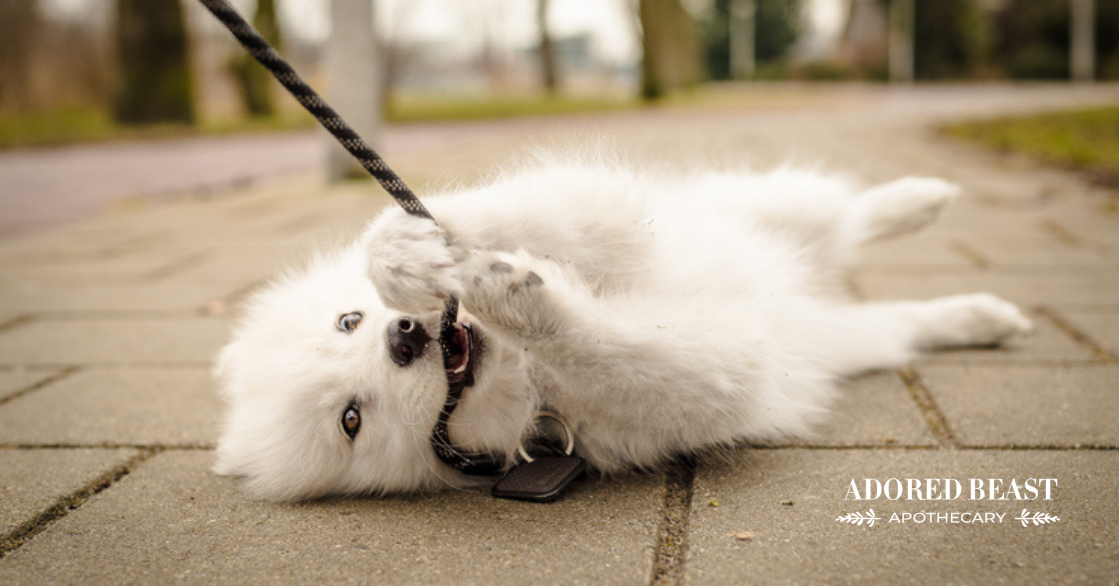Cats have always held a special place in my heart, and over my twenty years of practice I was fortunate to work with thousands of cats. In fact, our clinic was the primary hospital for an amazing cat rescue called VOKRA (The Vancouver Orphan Kitten Rescue Association).
During this time, I saw hundreds of different cases of kidney disease in cats. And unfortunately, that makes sense. Statistics suggest that 2-20% of all cats, 30-60% of cats over the age of 10, and as many as 80% of geriatric cats (over 15 years) will get kidney disease. Those are startling numbers to be sure.
Our adored kitties are often overlooked. If you do a quick Google search, you’ll notice that there is a TON of information for our canine companions, but not nearly as much for our cats. My goal for this blog is to share my knowledge and experience with you and your feline family regarding kidney disease and how you can help your beloved kitty.
The Role of the Kidneys
The kidneys are located on each side of the abdomen. The kidneys play an incredibly vital role in the body. They are paramount in filtering blood and producing urine and facilitating the removal of waste from the body. Additionally, the kidneys serve to regulate the body’s balance of fluids, minerals, and electrolytes.
Chronic kidney disease (CKD) is a persistent loss of kidney function over time. This disease can occur over a number of months or years before failure is evident. It won’t happen overnight. This is why watching for early signs and symptoms is so important. You want to try and catch it and start managing it as early as possible.
Stages of Kidney Disease in Cats
Please note, getting on this early is essential. It doesn’t have to be the devastating disease it can be.
There are four different stages of kidney disease in cats.
Cats should be carefully assessed before diagnosis of “chronic” kidney disease is made. Kidney values are impacted by many factors including gut health, chronic stress, poor quality diet, chronic dehydration (from eating dry food) and more. It’s important to clean up the diet (eg. species appropriate/unprocessed protein), assess stress levels and assess your pet’s gut health before determining is it is truly a chronic, degenerative conditions or a reflection of something else going on.
Stage 1
Bloodwork must be done regularly (BUN, Creat, SDMA, electrolytes) along with clinical signs of kidney disease (eg. pu/pd = increase thirst and urination, weight loss, lethargy, nausea, etc.). Most cats will have increased kidney values on blood tests, and lower than ideal specific gravity and urine. In this stage there is also usually the beginning stages of increased thirst and urination.
For cats with stage 1 kidney disease, a balanced home-made or commercial raw diet is ideal, especially if they are currently eating dry food. Bloodwork should be regularly assessed (every 6 weeks) to see trends in the kidney values. Clinical symptoms are really important too, especially pu/pd. If no pu/pd, a good quality regular raw diet is the best option.
Symptoms include:
- frequent urination = p/u
- excessive drinking = p/d
- constipation
Stage 2
To diagnose stage 2 kidney disease in cats, blood work is essential yet again. This will show what your cat’s kidney values are doing. Make sure you get a geriatric panel with an SDMA. Many vets will reserve this only for older cats, but it can be useful with younger ones as well. The kidneys excrete SDMA and will show kidney disfunction earlier than the typical creatine and BUN results. SDMA tests are more reliable because they can identify if the kidney has had an acute injury, or is in chronic kidney failure.
Stage 2 can occur in chronic kidney disease but it can also occur in times of high stress or other illness complications so it’s still important to do regular blood testing to see if it trends down or up as you adjust the diet. Sometimes it will trend down once you holistically assess the case and made changes to the animal’s health care plan. If phosphorus is still in normal range at stage 2 and animal is not PU/PD, a high quality balanced raw diet is still the best optionto avoid muscle wasting which low protein diets can cause.
Symptoms include:
- stage one symptoms, plus
- loss of appetite
- nausea and vomiting
- weight loss
Stage 3 and 4
At these stages, true degenerative kidney disease is likely and the diet may need adjusting to compensate for this. At these stages, phosphorus may be high and potassium and sodium may also not be in normal range. BUN/Creat and SDMA are often significantly elevated. You most likely will see clinical symptoms in a cat at this stage – eg. PU/PD, bad breath, lethargy, anorexia. Decrease phosphorus in the diet and add omega 3s, vitamin Bs, vitamin E, and vitamin C. Sodium/potassium needs to be added in relativity to bloodwork for electrolyte balance but start with recipe below.
Symptoms include:
- stage one and two symptoms, plus
- chronic bladder infections
- cloudy urine
- bad breath
- mouth ulcers
- vomiting and/or diarrhea
- lethargy
- disinterest in normal daily activities or things that your cat would usually be interested in
Managing Kidney Disease
Most conventional vets will recommend a low phosphorus, low protein diet.
First of all, we highly recommend trying to find an animal homeopath, a holistic feline nutritionist or holistic veterinarian to help you though this process.
Many factors can impact kidney values:
- gut health
- chronic stress
- poor quality diet
- chronic dehydration (from eating dry food)
- and more
You can help to manage (and prevent) kidney disease by working on each one of these factors.
Once a diagnosis of kidney disease was confirmed, our clinic protocol was:
- A diet change – slowly removing all dry food while introducing a home-cooked, raw, or canned diet. While we always did our best with diet, it’s imperative that your cat eats. You may need to try different approaches to find the perfect one for your cat. Be patient with your cat… in my experience, an “all-at-once” approach doesn’t typically work.
- Supporting the gut with pre and probiotics. Not only is beneficial bacteria paramount for kidney function, reducing bacterial load, and metabolizing hormones and enzymes for nutrition, science is showing it also directly relates to kidney health. Try to find one made for cats with feline species-specific bacteria like our Felix’s Flora.
- Digestive enzymes can also be helpful to assist the digestive process and help the body absorb more nutrients.
- Support the other organs. Our Liver Tonic is really good for this, and it’s very gentle.
- For stage 3 and 4 – Reducing phosphorus and adding omega 3s, vitamin B, vitamin C, and, vitamin E. *Based on bloodwork, sodium and potassium were sometimes added for electrolyte balance.
- Intravenous fluids to help with dehydration and possible electrolyte imbalance.
- LEARN TO DO SUB Q FLUIDS AT HOME! This is so incredibly important!
- Homeopathy: Where do I begin… from the very moment there is a possibility of stage one kidney disease, all the way to the end of stage four, homeopathy is a life saver. Here are remedies known to be extremely helpful and we used at our clinic:
- Stage One: Berberis 12C, Phosphorus 30C, given three times a day for one week, then once a day for one week, then once a week ongoing.
- Stage Two: Berberis 30C, Phosphorus 200C, Arnica 30C, following the same instructions as above.
- Stage Three & Four: Berberis 30C, Phosphorus 200C, Arnica 200C, and if the cat has mouth sores, or vomiting, add Arsenicum Album 30C, following the same instructions above.
Additionally, if lethargy or disinterest are present, give Phosphoric Acid 200C two times per day for 3 days. If there is no improvement, change to Nat Mur 200C two times per day for 3 days. If either Phosphoric Acid or Nat Mur work, give them once a week ongoing.
Here is a recipe from Animal Nutritionist Sarah Griffiths for a well-balanced diet that is low in phosphorus and iodine – ideal for stage 3 and 4.
- 227 grams ground chicken or turkey breast (raw or cooked)
- 227 grams chicken/turkey thigh meat (raw or cooked)
- 227 grams chicken/turkey heart (raw or cooked)
- 227 grams chicken/turkey liver (raw or cooked)
- 50 grams baked (well-cooked) winter squash (no skin)
- 40 grams psyllium fibre
- 40 grams of herring or mackerel oil
- 20 grams eggshell powder (do not substitute bone meal)
- 3.5 grams potassium salt (low sodium)
- 3 drops (33 IU) Trophic liquid vitamin E
- 1 gram Ascorbic Acid Powder from Now Brand
*Makes roughly 2.5 lbs of food.
Kidney disease in cats can be a scary diagnosis to receive, but with the right knowledge, you can help manage the condition incredibly well in the early stage and as best as possible for quality of life in the later stages. Please reach out to holistic vets or qualified animal homeopaths – it will make a WORLD of difference.












![[RESEARCH] Is Herbicide Safe for Dogs?](https://blog.adoredbeast.com/wp-content/uploads/2025/06/herbicides-safe-for-dogs-103x55.png)